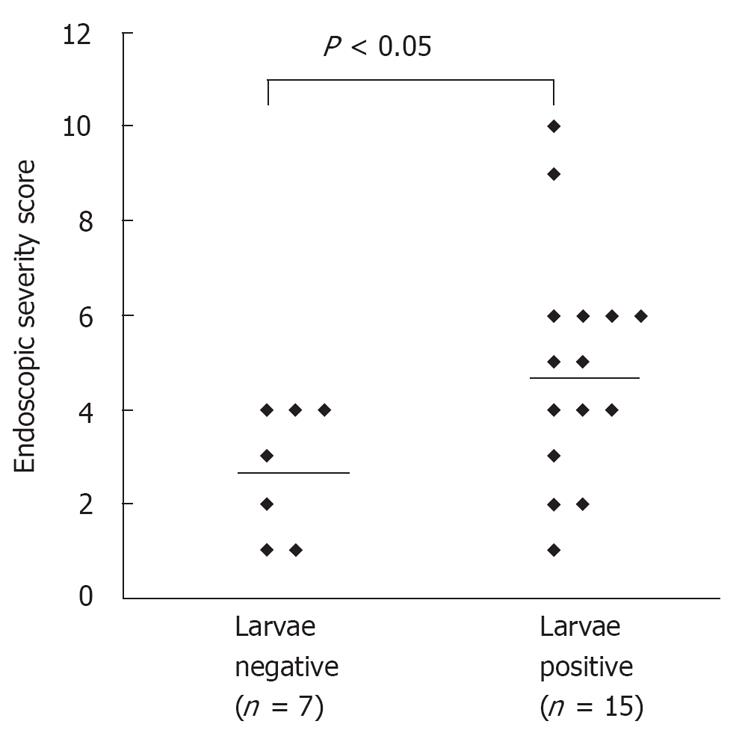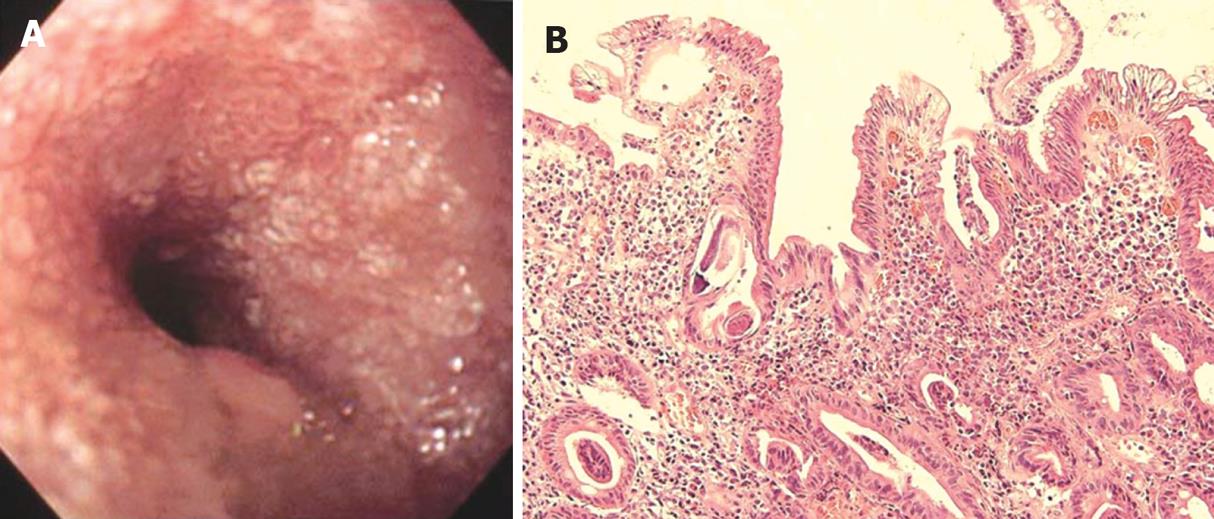Copyright
©2008 The WJG Press and Baishideng.
World J Gastroenterol. Mar 21, 2008; 14(11): 1768-1773
Published online Mar 21, 2008. doi: 10.3748/wjg.14.1768
Published online Mar 21, 2008. doi: 10.3748/wjg.14.1768
Figure 1 Frequency of abnormal endoscopic findings in the duodenum
Figure 2 Comparison of endoscopic severity of the duodenum between the patients with larvae present and larvae absent in the duodenal biopsy (P < 0.
05, Mann-Whitney U-test).
Figure 3 Representative endoscopic image and HE staining of duodenal biopsy.
A: EGD showing white villi and edematous mucosa in the second part of duodenal (Case 11); B: Biopsy specimen from the mucosa showing numerous larvae with villous atrophy and mild inflammatory cell infiltration (HE, × 200).
Figure 4 Endoscopic image and HE staining of duodenal biopsy.
A: EGD showing white villi and stenosis in the second part of duodenal (Case 16); B: Biopsy specimen from the mucosa showing numerous larvae with severe villous atrophy and moderate inflammatory cell infiltration (HE, × 200).
Figure 5 Endoscopic findings and HE staining of duodenal biopsy.
A: EGD showing large ulcers and pseudopolyps in the second part of duodenal (Case 15); B: Biopsy specimen from the margin of the ulcer showing formation of granulation tissue and complete destruction of the villi. Numerous larvae are observed within the granulation and lymph vessels (HE, × 100).
-
Citation: Kishimoto K, Hokama A, Hirata T, Ihama Y, Nakamoto M, Kinjo N, Kinjo F, Fujita J. Endoscopic and histopathological study on the duodenum of
Strongyloides stercoralis hyperinfection. World J Gastroenterol 2008; 14(11): 1768-1773 - URL: https://www.wjgnet.com/1007-9327/full/v14/i11/1768.htm
- DOI: https://dx.doi.org/10.3748/wjg.14.1768













